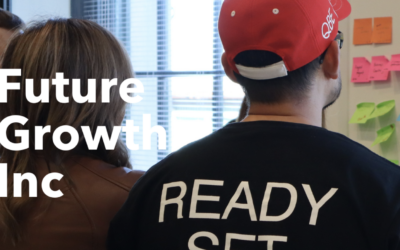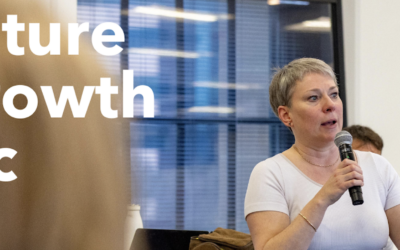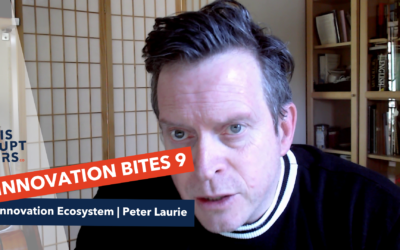For decades we have been looking to unlock the secret science of innovation. We apply the scientific method and work our way through the process – building on our learning and analysis. We document our hypothesis and test it with a live audience. A buyer. A customer. And with each experiment we learn. Sure we may fail, but that too, is a learning. Muru-D’s entrepreneur in residence, Mick Liubinskas, calls this “flearning”.
But when it comes to innovation, my view is that we need to think more like chefs than scientists. We shouldn’t just be seeking results but wonder.
Any good chef knows that you need the best ingredients to produce amazing results. And we all know that the “proof of the pudding is in the eating”. But how do we bridge the gap between ingredients and results? What is there in the preparation and method that is transformative? What is the recipe and how can it be improved?
At Disruptor’s Handbook, have been working with Qantas on their Codeshare Hackathons for the past two years. In between we also work on a variety of other innovation events, hackathons, digital transformation programs and workshops designed to help large companies innovate like startups. This means that we are constantly seeking and finding new methods and approaches, refining our processes and delivering results to clients.
You can follow the stream of activities from the Qantas Codeshare Hackathon on the links below, but read on for a deeper analysis of what worked:

Lesson 1: Innovation theory only takes us so far
While there is plenty to read and absorb when it comes to innovation, it is, however, only within the cauldron of activity that the true lessons are learned. We have to learn by doing. And this is where hackathons excel as an innovation event.
While we spend a great deal of time planning out and refining our hackathon process, when we add the human ingredient, innovation can take a sudden and dramatic turn. This year, one of the teams arrived at the Team Forming stage and announced that they were heading off to immerse themselves in the experience of “spontaneous travel”. Over the course of the weekend, this team arrived at the airport, purchased tickets to fly to Melbourne, hustled their way into business class, ran lean canvas and prioritisation activities while mid-flight, coded through the night in cafes and borrowed offices, validated their concepts by buying coffees for cafe customers and managed to get back on Sunday morning for pitch practice.
While we were all slightly skeptical of the need to travel in this way, the team, Go Vida, proved that the valuable insights and outcomes can be achieved rapidly. In particular, the team proved:
- Qantas customer service staff respond in creative and positive ways to the needs of travellers
- Agile and entrepreneurial thinking can challenge even the entrepreneurs in the midst of action (at one point the team considered just staying in Melbourne and visiting friends for the weekend)
- The lean process works even at 30,000 feet – with post-it notes adorning baggage buckets and seat backs, the Go Vida team pushed through the inconvenience to prepare for the coding session ahead of them
- Connections win – out of power and time, the Go Vida team reached out to Pozible founder, Rick Chen who promptly arrived with keys to Pozible HQ and abundant wifi.

Lesson 2: Make the theory practical
While it’s true that the theory can only take you so far, there is a distinct advantage that comes with turning that theory into practice. Our library of Disruptor’s Handbooks are designed to do just that. But it’s one thing to make these available and expect the teams to use them, and quite another to run impromptu workshops to take the teams to a new level.
Over the course of the weekend, we ran dozens of small workshops, review and prioritisation sessions with many of the teams. Supported by a swarm of mentors, the teams responded by building amazing minimum viable products (MVPs) in less than 24 hours. The secret ingredient here was the ability to quickly build trust while also empowering the teams to make decisions.

Lesson 3: Teams must ship
I love pitches. And I love a good story. But there is a substantial difference between a pitch, a story and demo of a working MVP. Having run and attended dozens of hackathons in the last year, I have seen a shift away from demonstrations of working technology. In their place are fancy powerpoint presentations, videos or simple prototypes. But when corporates are assessing the potential of an idea, its creative team and their capacity to deliver, there’s a huge gulf between those that “think they can” and those that “ship”.
Through the Qantas Codeshare Hackathon, we constantly reminded the teams that they were expected to demonstrate working technology. We pushed them to tell compelling stories and to craft a pitch that wove the story of the hackathon challenges with the demonstration of their work. In a world where experience is increasingly “digital”, working MVPs are the currency of innovation.
Making the next, best meal
Over the last week, the Disruptor’s Handbook team have been collating these lessons and insights – and reflecting back on a jam-packed, exciting weekend of innovation. There are many more lessons that we will be analysing and incorporating into our next corporate innovation program. But one thing is certain – once you have a taste for innovation, its promise will drive you forward.
Note: Be sure to check out Steve Cooper’s fantastic photo stream of the event here.




